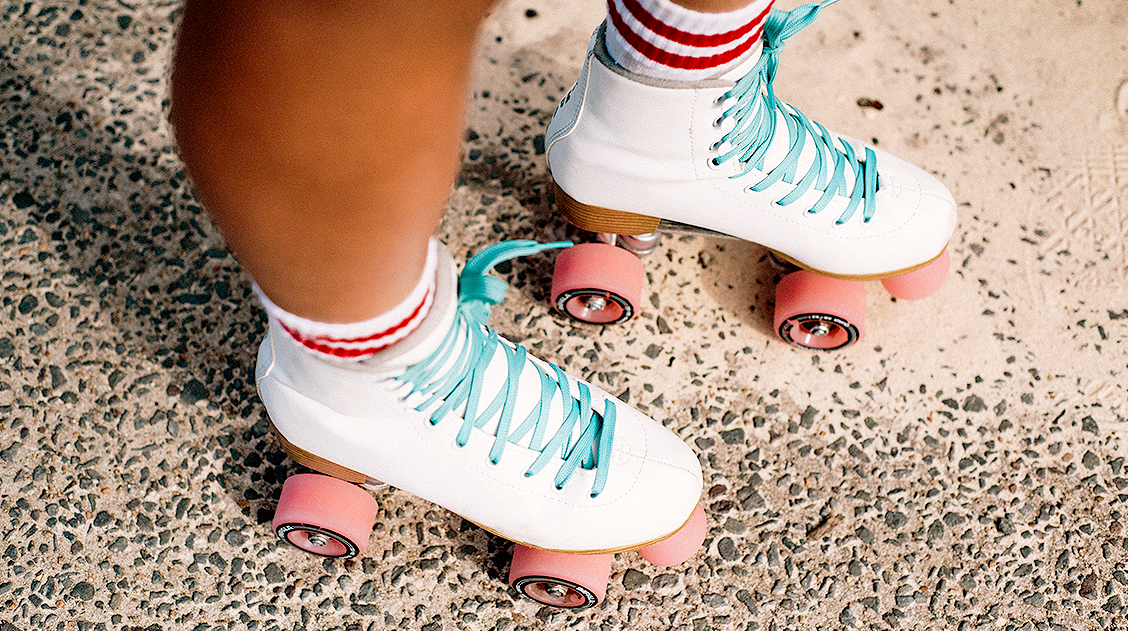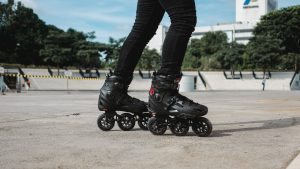
Recent Uptake in Roller Skating Reveals Research Gap
Roller skating is a sport that can be enjoyed socially or individually, inside or outside, professionally or casually.
It has seen a resurgence over the past 2-3 years, led by an increase in the population of online spaces. As a result, research interest has increased. This has made it the ideal focal point for innovative sport science studies.
In this article, we discuss skating’s recent resurgence, the research surrounding it, and its health benefits.
Is roller skating coming back?
Roller skating’s recent resurgence has been well documented.
A review published in Sustainability assessed the lifestyles of adults during pandemic isolation. It concluded that physical activity, even indoors, improved mental health.
As a result, many looking for a unique form of escapist, solo exercise have taken to roller skating. The Washington Post reported that searches for roller skating boomed during the pandemic.
Since then, it has become increasingly popular around the world. From Venezuela, where people roller skate to church each year in December, to Australia, where the organization Skate Australia promotes and supports skating across the country, this once unconventional sport is now vitally important to communities.
A brief history
Although it was John Joseph Merlin who invented the first roller skates, the first patented design dates back to Monsieur Petitbled, according to James Turner in The History of Roller Skating.
This set of skates better resembled roller blades, however. The four-wheel, car-like arrangement of roller skates took off later on.

Roller skating vs. rollerblading
Roller skating is significantly different from rollerblading. But how? Rollerblades are a bit like ice skates, as shown here. The wheels are in a line, rather than two by two like roller skates.
When was roller skating popular?
Roller skating started as a sport in the 18th century. People started doing it in various new arenas, such as in theatre productions and bespoke bars.
But, it was not until the 19th century that it really took off. With the uptake of manufacturing, roller skates began to be mass-produced, making them accessible to everyone.
The 20th century beckoned in the Golden Age of Roller Skating. Largely recalled as starting in 1937 and ending in 1959, roller skating became more mainstream across the world, and the number one group sport in the USA.
Then, in the 1980s, many celebrities and artists adopted roller skating as an aesthetic style. This included stars like Farrah Fawcett, Diana Ross, and Elton John.
Which roller skates are best for beginners?
For many, the most difficult part of skating is getting started. This is because of the unnatural feeling and lack of control that comes with being on wheels rather than on solid ground.
It also takes time to acclimatize to being on these wheels, meaning that motivation can be low in the beginning.
Different skates suit different users. For example, there are inside and outside wheels, or hybrid wheels for a combination of the two.
There’s also the matter of heels. Some skates have lifted heels that rest on the plate, attached to the wheels. There are variations of this design, with some that look like pumps mounted on a wheel plate.
The wheel plate is sometimes made of nylon or metal, which affects durability.
The design of roller skates also has an impact on how comfortable people feel, as well as range of motion, ease of gliding, and suitability on different surfaces.
Why roller skating is good for you
Roller skating is a great form of cardio.
It works on muscles that people do not often use in other forms of exercise. Muscles in the hips and legs, including the glutes and hamstrings, get a thorough workout.
There’s a lot of squatting involved in this sport, which definitely helps when trying to work up a sweat.
Roller skating is also highly social. The rise of roller discos and roller rinks has allowed people to socialize while exercising. Further Sustainability research indicates that combining social elements with exercise has a dramatically positive effect on mental health.
As noted in an article in the International Journal of Environmental Research and Public Health, roller skating enhances more than just our physical well-being. It contributes to creative engagement with exercise without strict regimentation. It also helps adolescents to develop social skills.
Can roller skating help you lose weight?
The short answer is yes. It is an aerobic workout that helps to burn a fair few calories and works those hard-to-train muscles mentioned above: the glutes and hamstrings in the hips and legs.
When people roller skate, they focus their attention on the lower body. This helps build strength in the core and lower body.
Furthermore, the arms usually swing and/or improve mobility while in motion, meaning that the skater also exercises their upper limbs.
The benefits are so many, that venues now offer roller skating sessions targeted towards improving personal fitness.
More research required
As shown, roller skating is now gaining increased attention, thanks to its excellent health benefits and general public interest.
To further extend the reach and impact of this sport, research is required on these topics. More details on how it’s benefiting those taking part, and arguments for rollout in education and communities, will help in either aiding or ending its recent resurgence.
For example, MDPI’s journal Sports provides an excellent publication space for studies related to sport science. This includes papers covering sports nutrition, ergonomics, and the management of sports injuries.
If you want to contribute knowledge about this or another sport, you can submit to MDPI Sports.
Written collaboratively by Shaheena Patel and Katherine Bosworth.










